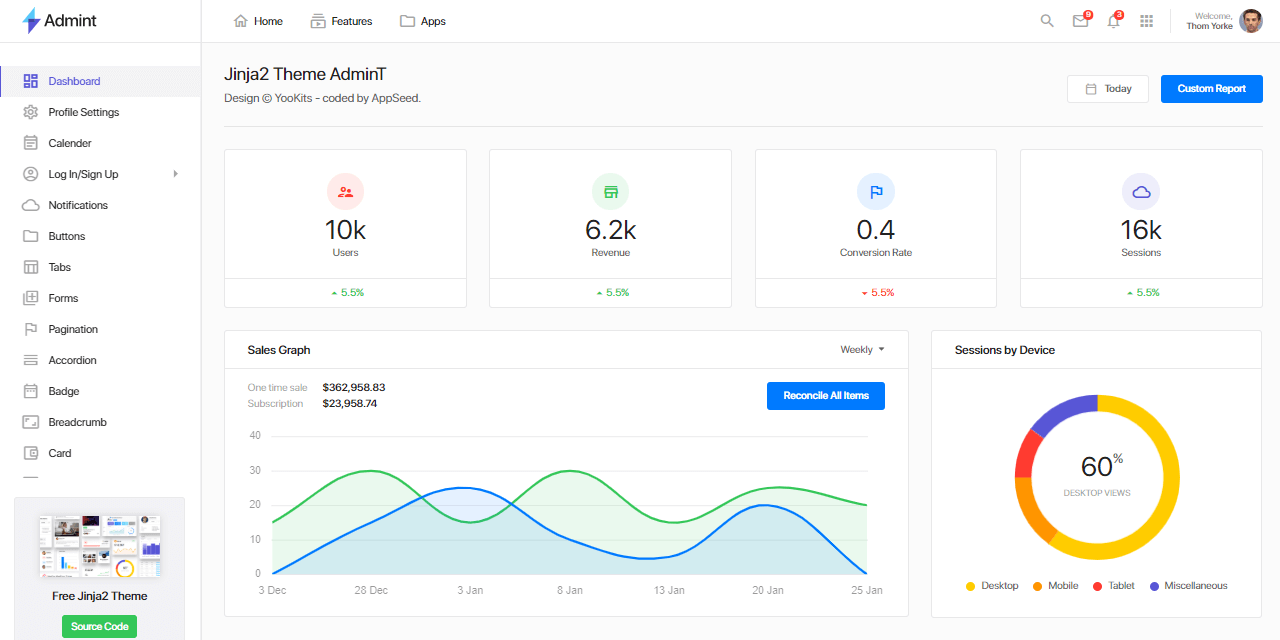Jinja2 Template Example
Jinja2 Template Example - The template engine is similar to the python format method; Web the following example shows the default configuration settings. Jinja2 is a library for python that is flexible, fast and secure.jinja. You can use templating with the template module. Flask, a lightweight python web application framework, is one of my favorite. It was made after django’s. In this example, we gonna take look into template. Web what template engines do. It is inspired by django’s templating system but extends it with an expressive language. This document describes the syntax and semantics of the template engine and will be most useful as reference to those creating jinja. Web jinja2 is a modern and design friendly templating engine for python programming language. In this example, we gonna take look into template. Web below is a minimal template that illustrates a few basics using the default jinja configuration. It is inspired by django’s templating system but extends it with an expressive language. >>> import jinja2 >>> environment = jinja2.environment(). Jinja2 is one of the most used template engines for python. Line numbers of exceptions directly point to. It was made after django’s. Web ansible uses jinja2 templating to enable dynamic expressions and access to variables and facts. From jinja2 import template t = template ('hello, { { name }}!') print (t.render (name='john doe')) # output: Web for example here i have a playbook jinja2_temp_1.yml where i have defined a variable inside the playbook using vars: Web ansible uses jinja2 templating to enable dynamic expressions and access to variables and facts. Web the jinja2 template syntax, denoted by the curly brace ‘{‘ followed by the percentage sign ‘%’ here jinja allows us to loop over the. Mike } jinja2 template (jinja2 encloses its variables in two curly brackets on each side.) hello { { name }} in this. A very short & simple example: It is inspired by django’s templating system but extends it with an expressive language. I did some research online,. The template engine is similar to the python format() method; Web 6 (part 4: Web the example asks for a user name and generates a message string, which is printed to the user. Print the rendered text to the screen or a file as suitable. Flask) what is jinja 2? Web the example asks for a user name and generates a message string, which is printed to the user. We will cover the details later in this document: Flask, a lightweight python web application framework, is one of my favorite. Web jinja template inheritance. { {name}} had a little {. Web for example here i have a playbook jinja2_temp_1.yml where i have defined a variable inside the playbook using vars: Web ansible uses jinja2 templating to enable dynamic expressions and access to variables and facts.
AdminLTE Jinja2 Template Codementor

Jinja2 Template — OpenSource and Free Medium

Using Jinja2 Templates in Flask YouTube
From Jinja2 Import Template T = Template ('Hello, { { Name }}!') Print (T.render (Name='John Doe')) # Output:
Web What Is Jinja2?
Jinja2 Is A Modern Day Templating Language For Python Developers.
Web The Following Example Shows The Default Configuration Settings.
Related Post: